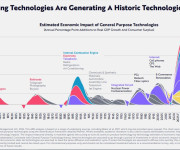Big Data Analytics: Tools and Trends

Hadoop is a structure and a collection of tools for processing colossal data sets, was formerly designed to work with clusters of physical machines. That has changed.
Distributed analytic frameworks, such as, MapReduce, are developing into appropriate resource managers that are gradually transforming Hadoop into a universally useful data operating system. With these frameworks, one can perform a broad range of data manipulations and analytics operations by connecting them to Hadoop as the disseminated document storage system.
The fusion of big data and compute power likewise permits analysts investigate new observation data for the period of the day, for an example, websites visited or location.
Alternatives to traditional SQL-based relational databases, called NoSQL (short for “Not Only SQL”) databases, are rapidly gaining popularity as tools for use, in particular, kinds of analytic applications, and that momentum will continue to grow.
What Apache Spark Does
Apache Spark is a fast, in-memory data processing engine with elegant and expressive development APIs to allow data workers to execute efficiently streaming, machine learning or SQL workloads that require rapid, constant access to datasets. Data scientists and analysts have to get Apache Spark and Scala training for efficient reporting and operations.
With Spark operates on Apache Hadoop YARN, developers everywhere can now design applications to misuse Spark’s strength, derive penetrations, and enhance their data science workloads within a single, shared dataset in Hadoop.
What Is IoT?
Internet of Things represents a general concept of the capacity of network devices to sense and collect data from the world around us, and afterward, share that data over the Internet where it can be handled and used for different intriguing purposes. With so many emerging trends in big data and analytics, IT organizations need to design circumstances that will enable analysts and data scientists to research.
IT managers and implementers cannot use a lack of maturity as an excuse to halt experimentation, Originally, only a few people — the most experienced analysts and data scientists — need to research.
Then those excellent users and IT should collectively discover when to release new sources to the rest of the organization. And IT shouldn’t significantly control in analysts who want to move ahead full-throttle. Rather, IT needs to work with researchers to “put a variable-speed throttle on these useful new tools.”
The post is by Vaishnavi Agrawal loves pursuing excellence through writing and have a passion for technology.























